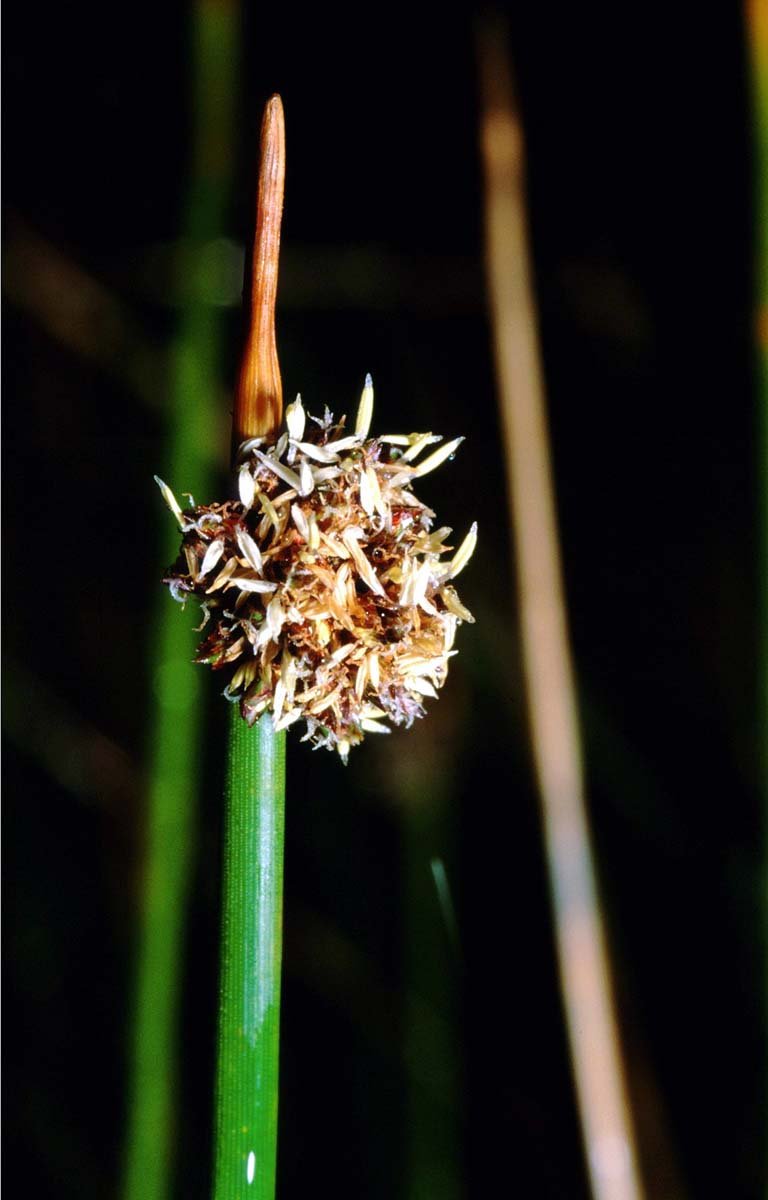Ficinia nodosa

Botanical Name: Ficinia nodosa
Common Name: knobby club-rush
Family: Cyperaceae
Size: Up to 1m H x up to 0.8m W
Leaves: Fine, bright green, rush-like, cylindrical form 15 to 100cm long by 1-2mm diameter, tufting, stiff and erect but often arching. Leaves sometimes reduced to orange-brown sheaths.
Flowers: Dense globular or hemispherical heads, 7-20mm diameter with numerous spikelets, toward the end of the leaf shaft. Pungent.
Flowering Time: Mid-spring to early summer.
Fruit: A small 3 sided obovoid (egg-shaped with the broadest part at the top) nut. Found within the flowerhead, irregularly shaped, smooth and glossy, dark brown to black, approximately 1 mm in diameter. Retained in flowerhead from November to May and sometimes all year round.
Habitat/distribution: Coastal swamps along Northern and Eastern Tasmanian Coast, widespread. Often close to the edges of saline or sub-saline lakes and watercourses and coastal saltmarshes. Also occurs in other sandy soil locations. Also WA, SA, Vic, NSW, Q.
Where to See: Throughout Tasmania, especially damp coastal and other sandy areas.
Other notes: In the past was known as Isolepis nodosa. Provides a foliage variation in a garden situation. Hardy, tolerates salinity, salt spray, lime and drought, and grows in gravel, loam or sand. Edible rhizome. Quick to form clumps. Used to stabilize soils or dunes or dry creek-beds, also widely used in landscaping. Found to be an effective bio-filtration plant for removing contaminants in storm-water run-off or wetland areas. Leaves used for indigenous basket weaving.
